- The University
- Studying
-
Research
- Profile
- Infrastructure
- Cooperations
- Services
-
Career
- Med Uni Graz as an Employer
- Educational Opportunities
- Work Environment
- Job openings
-
Diagnostics
- Patients
- Referring physicians
-
Health Topics
- Health Infrastructure
Place of Innovation
A campus that unites everything: spacious study zones for effective learning, comfortable seating for creative breaks from thinking, modern labs for innovative research projects, fully equipped lecture halls for educating the medical professionals of tomorrow and proximity to University Hospital for a health concept of the future. With our new campus, a space has been created for the innovative ideas and future-oriented thinking of thousands of employees and students.
Our Campus is a place
- where the clinical and non-clinical areas are brought together into one company, the Medical University of Graz
- where the creation of profiles and priorities in teaching and research go beyond existing structural limits
- where resource use, synergy formation and the capacity to develop are optimal
Our Campus is a space
- for communication among teaching staff, researchers, students and staff
- for creative exchange between teaching staff and researchers from different disciplines who are active in the medical field
- for visions and role models, for future-oriented thinking by students, teaching staff, researchers and staff
Our Campus is an opportunity
- to provide barrier-free access to the teaching, research and communication campus
- to establish a university location with a sustainable design and use
- to stimulate a regional economic space and to develop into an attractive university
Art on CAMPUS
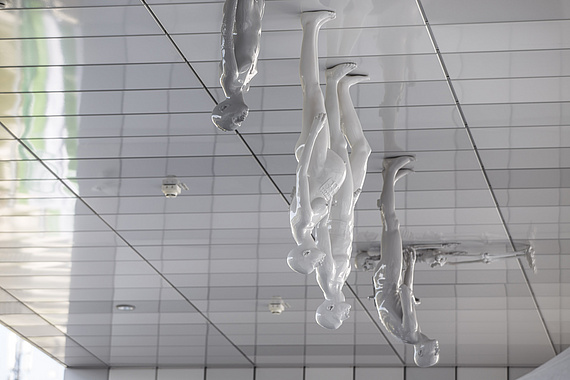
Manfred Erjautz: "Shelter (High touch)"
Eight figures stand or lie upside down around in the opening of the facade at the campus entrance: a fetus, a newborn, a child, a young person, a pregnant woman, a man, a frail man and a skeleton. The figures grow—each in the color of the square of the facade in which it is located—out of the facade. Cast in aluminum and painted or coated in powder, they feature the human body and the changes in its constitution over the course of a lifetime.
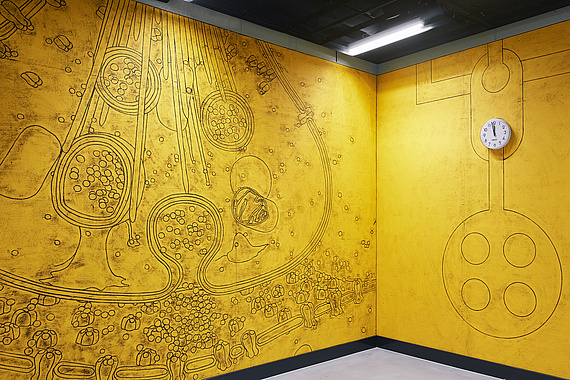
Matt Mullican: "Canvas rubbing project"
Yellow-primed canvases have been hung to cover three walls in the auditorium foyer. Illustrations were applied to the canvas with oil pastels using the frottage technique. The motifs deal with the subject "communication inside and outside the body." Processes within the body as well as scenes from the story of the relationship between doctors and patients are depicted. Several symbols from Matt Mullican's self-developed imagery and systematics can also be found.
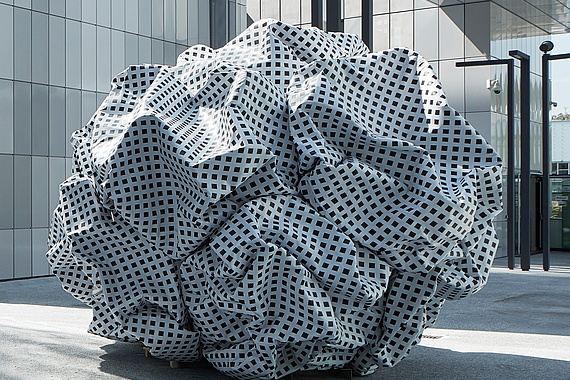
Esther Stocker: "Crumpled object"
Located at ground level, Esther Stocker's spherical sculpture resembles an artificial stone or rock. A square pattern is printed on the surface of hardened truck tarp, which is greatly folded and crumpled. With this scrunched up shape, she creates an image of the many discarded ideas with which researchers are confronted time and time again.
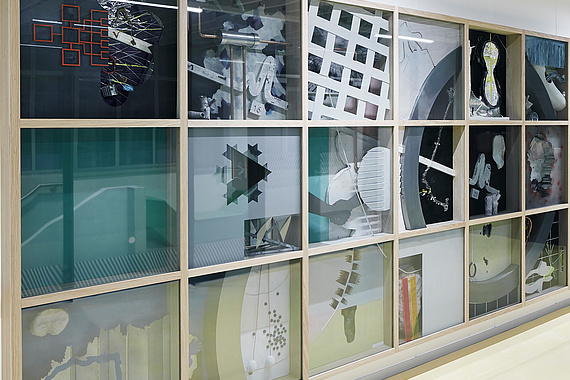
Misha Stroj: "On a body"
A "lab of another kind" hangs at the top of the steps by the entrance to the lecture hall: a type of shelf or case that includes the floor area of the numerous labs of the campus in its grid. Each work in the individual wood cases records a chain of test results. Several cases are enclosed in glass; several remain open.
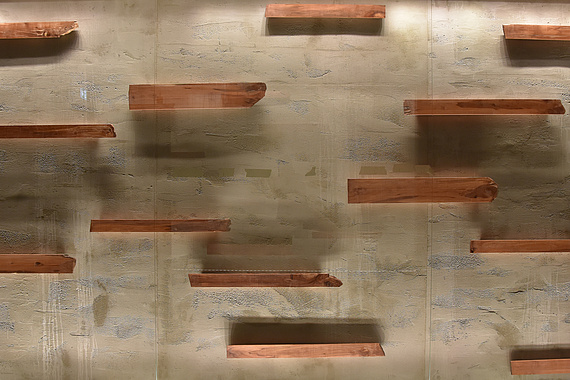
Johanes Zechner: "The trunks"
The orchards of the Graz Sisters of the Holy Cross were formerly found on the premises of the campus. Over the course of the development, trees were cut down. Their trunks were cut into boards and stored. The trunks of those apple trees are now on display in the farewell room of the pathology department. They have been brought into a floating formation that evokes a morphology of temporality along with the color of the room and the light.


